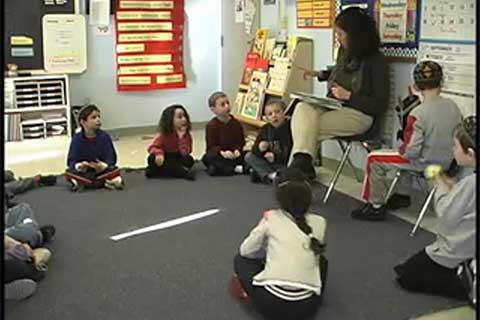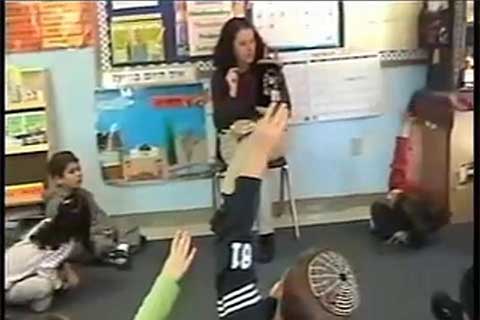Telling and Retelling
Each Monday and Thursday, I begin by telling and retelling the story or parts of the parasha that I have chosen. I present the story orally, though I often have a text in front of me. I usually have the humash open so that I can refer to specific phrases in Hebrew and also so that the children make the link that this is the story that is in the written text, even though they are hearing it orally.
Children take turns having the honor of holding the Torah. The Torah holder sits in a chair next to me throughout the Torah lesson, or until he or she asks to pass it on to a new Torah holder for the rest of the class. I continually emphasize the kind of behavior that is necessary for the person who is holding the Torah, as well as the appropriate behavior for everyone else while the Torah is out. I often hear students reminding each other to stop doing something because “…the Torah is out,” confirming for me that they have internalized this idea.
Every oral retelling will involve making choices about what to tell and what to focus on. As I make each of these choices, I try to stay focused on my big goals for teaching Torah. Which part of the parasha, which big ideas and which details, will help my students to make meaning of this text and know the basic content; which will help them to make connections to this text as Jews; and which will enhance their love of Torah?

